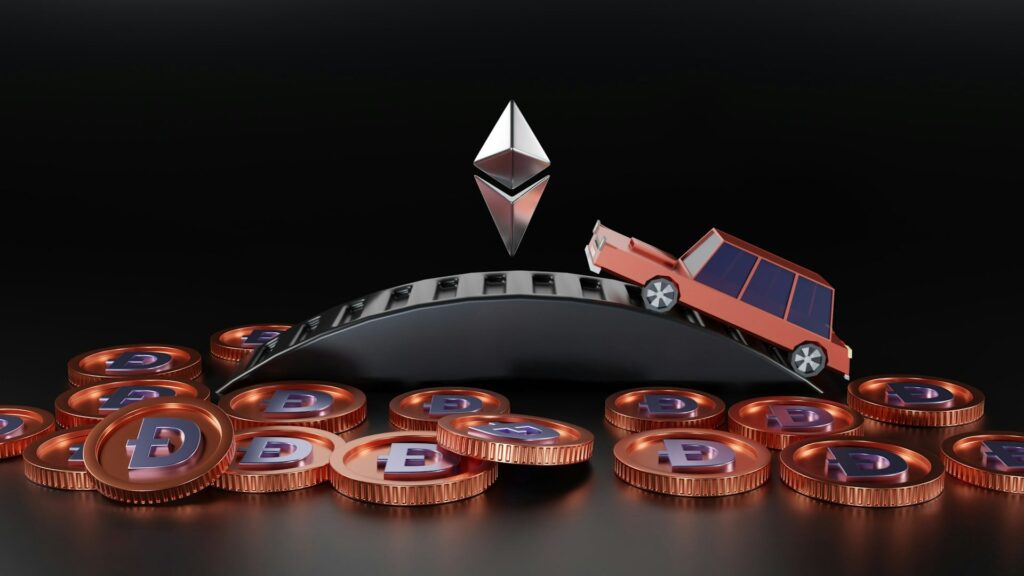XRP, the native digital asset of the Ripple network, has garnered significant attention since its inception in 2012. Designed to facilitate fast and cost-effective cross-border transactions, XRP operates on a unique consensus protocol that distinguishes it from traditional cryptocurrencies like Bitcoin and Ethereum. Unlike these proof-of-work systems, which rely on mining, XRP transactions are validated by a network of independent validators, allowing for quicker transaction times and lower fees.
This innovative approach has positioned XRP as a potential game-changer in the financial sector, particularly for banks and financial institutions seeking to streamline their operations. The Ripple network aims to bridge the gap between different currencies and payment systems, making it an attractive option for remittances and international payments. With its ability to settle transactions in mere seconds, XRP has been touted as a solution to the inefficiencies that plague traditional banking systems.
As the cryptocurrency market continues to evolve, XRP’s role in facilitating real-time payments and its partnerships with various financial institutions have sparked interest among investors and analysts alike. The growing adoption of blockchain technology in finance has further fueled speculation about XRP’s future, making it a focal point in discussions about the next generation of digital assets. The current XRP price in USD can be found at xrp price usd.
Factors Contributing to XRP Price Increase
Several factors have contributed to the recent surge in XRP’s price, reflecting both market dynamics and broader economic trends. One of the most significant drivers has been the increasing institutional interest in cryptocurrencies. As major financial players begin to recognize the potential of digital assets, investments in XRP have surged.
Institutions are not only investing in XRP for speculative purposes but also exploring its utility in enhancing their payment systems. This institutional adoption has created a ripple effect, leading to increased demand and subsequently driving up the price. Another critical factor is the regulatory landscape surrounding cryptocurrencies.
In recent years, there has been a growing acceptance of digital assets by regulatory bodies worldwide. For instance, Ripple’s ongoing legal battle with the U.S. Securities and Exchange Commission (SEC) has drawn considerable attention.
Positive developments in this case, such as favorable rulings or settlements, have often resulted in immediate price increases for XRP. The anticipation of regulatory clarity can lead to heightened investor confidence, further propelling XRP’s value as traders react to news and developments in real-time.
Market Analysis of XRP
The market dynamics surrounding XRP are complex and multifaceted. As of late 2023, XRP has established itself as one of the top cryptocurrencies by market capitalization, often ranking within the top five alongside Bitcoin and Ethereum. Its trading volume reflects a robust interest from both retail and institutional investors, indicating a healthy liquidity profile.
The price movements of XRP are often influenced by broader market trends, including Bitcoin’s performance, which tends to set the tone for the entire cryptocurrency market. Technical analysis of XRP reveals patterns that traders closely monitor for potential price movements. Indicators such as moving averages, Relative Strength Index (RSI), and Fibonacci retracement levels are commonly employed to gauge market sentiment and predict future price action.
Additionally, XRP’s correlation with other cryptocurrencies can provide insights into its price behavior; for example, during bullish phases in the crypto market, XRP often experiences significant upward momentum. Conversely, during bearish trends, XRP may also face downward pressure, reflecting the interconnected nature of cryptocurrency markets.
Comparison of XRP to Other Cryptocurrencies
When comparing XRP to other cryptocurrencies, several key distinctions emerge that highlight its unique position within the digital asset ecosystem. Unlike Bitcoin, which is primarily viewed as a store of value and a hedge against inflation, XRP is designed specifically for facilitating transactions between financial institutions. This utility-centric approach sets it apart from many other cryptocurrencies that focus on decentralized finance (DeFi) or smart contracts.
While Ethereum has gained prominence for its programmable blockchain capabilities, enabling developers to create decentralized applications (dApps), XRP’s primary function remains rooted in enhancing payment efficiency. Moreover, the consensus mechanism employed by XRP differentiates it from proof-of-work cryptocurrencies like Bitcoin and Ethereum (prior to Ethereum 2.0). The Ripple protocol utilizes a consensus algorithm that allows for faster transaction validation without the energy-intensive mining process.
This efficiency not only reduces transaction costs but also positions XRP as an environmentally friendly alternative in a landscape increasingly concerned with sustainability. As regulatory scrutiny intensifies around energy consumption in cryptocurrency mining, XRP’s low-energy model may become an attractive feature for environmentally conscious investors.
Potential Impact of XRP Price Soar
Should XRP experience a significant price increase, the implications could be far-reaching across various sectors. For investors, a surge in price could translate into substantial returns, attracting more capital into the cryptocurrency market as traders seek to capitalize on upward momentum. This influx of investment could lead to increased liquidity and trading volume for XRP, further solidifying its position as a leading digital asset.
From a broader economic perspective, a rising XRP price could enhance its appeal among financial institutions looking to adopt blockchain technology for cross-border payments. As banks and payment providers witness the potential for cost savings and efficiency gains through the use of XRP, they may be more inclined to integrate it into their systems. This could lead to greater adoption of Ripple’s technology and potentially reshape how international transactions are conducted.
Furthermore, increased usage of XRP could contribute to its stability as a digital asset, fostering confidence among users and investors alike.
Expert Opinions on XRP Price Movement
Expert opinions on XRP’s price movement vary widely, reflecting differing perspectives on its future potential and inherent risks. Some analysts express optimism about XRP’s prospects due to its established partnerships with major financial institutions and its unique value proposition in facilitating cross-border payments. They argue that as more banks adopt Ripple’s technology and utilize XRP for liquidity purposes, demand will naturally increase, driving up its price over time.
Conversely, some experts caution against overestimating XRP’s potential due to ongoing regulatory uncertainties and competition from other cryptocurrencies. The SEC lawsuit has raised questions about whether XRP should be classified as a security, which could have significant implications for its trading status and adoption by institutional investors. Additionally, competition from other blockchain solutions that offer similar functionalities may pose challenges for XRP’s market share.
These differing viewpoints underscore the complexity of predicting price movements in the cryptocurrency space and highlight the importance of conducting thorough research before making investment decisions.
Risks and Challenges for XRP
Despite its promising features and growing adoption, XRP faces several risks and challenges that could impact its future trajectory. One of the most pressing concerns is regulatory scrutiny. The ongoing legal battle with the SEC has created uncertainty around XRP’s classification as a security or commodity.
A ruling against Ripple could lead to significant repercussions for XRP’s trading status on U.S. exchanges and may deter institutional investors wary of regulatory compliance issues. Market volatility is another inherent risk associated with investing in cryptocurrencies like XRP.
The crypto market is known for its rapid price fluctuations driven by speculation, news events, and broader economic factors. Such volatility can lead to substantial losses for investors who may not be prepared for sudden downturns or corrections in price. Additionally, technological risks related to security breaches or vulnerabilities within the Ripple network could undermine confidence in XRP as a reliable digital asset.
Future Predictions for XRP Price
Looking ahead, predictions for XRP’s price remain varied among analysts and market participants. Some bullish forecasts suggest that if Ripple successfully navigates its legal challenges and continues to expand its partnerships with financial institutions globally, we could see significant upward momentum in XRP’s price over the next few years. Analysts point to historical trends where positive news regarding regulatory clarity or institutional adoption has led to rapid price increases.
On the other hand, bearish predictions caution that ongoing regulatory challenges could hinder XRP’s growth potential in the near term. If Ripple fails to secure favorable outcomes in its legal battles or if competition intensifies from emerging blockchain solutions, it may struggle to maintain its current market position. Ultimately, while there is considerable optimism surrounding XRP’s future prospects due to its unique utility and growing adoption among financial institutions, investors must remain vigilant about the risks involved in this dynamic market landscape.



